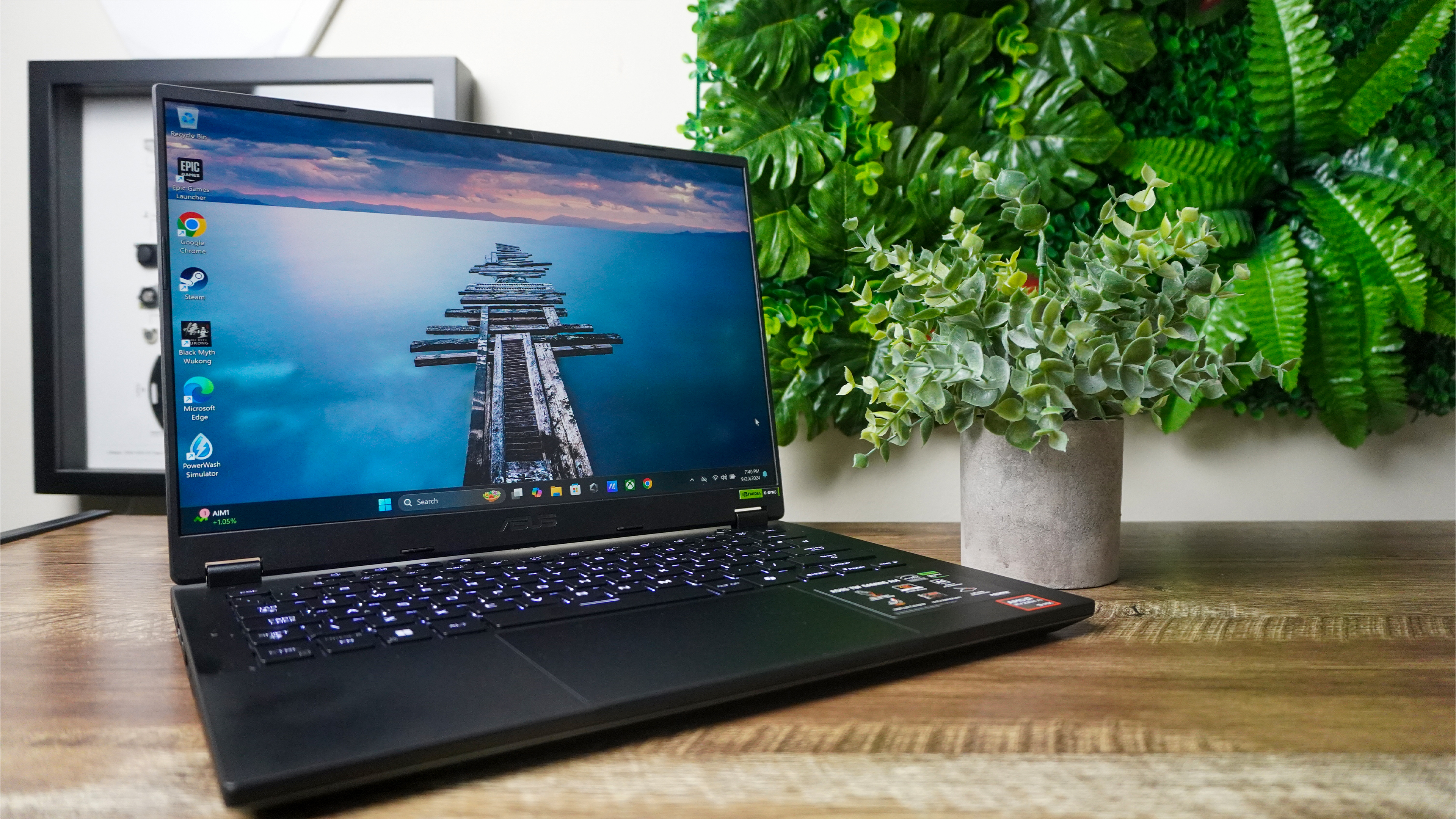
When the going gets TUF, the Asus TUF Gaming A14 just murders the ROG Zephyrus G14 to become the best 14-inch gaming laptop you can buy. Vivid language, I know, but I can’t think of a better way to sum this mini-but-mighty machine up!
Sporting cleaner, sharper looks, all the latest components creating a symphony of horsepower under the hood, and surprisingly good battery life for a gaming laptop, you’ll be shocked at what you can get for $1,500.
This is an ROG Zephyrus G14 in spirit, but $600 less — cutting the OLED in favor of a more than serviceable QHD+ IPS display with a 165Hz refresh rate, and shedding its aluminum unibody skin for a mix of the metal and plastic with a premium feel.
On top of that, a shift to the AMD Ryzen AI 9 HX 370 processor beefs up AI performance nicely, and is even more powerful than what is on offer in the pricier counterpart. Pair that with RTX 4060 graphics unlocking DLSS 3.5, and cram it all into a thin and lightweight shell, and you’ve got a seriously impressive mid-ranger.
That’s not to say it’s perfect. A maximum of 16GB DDR5 RAM and a limited port array could get a little annoying depending on your peripheral and multitasking demands. But all-in-all, this laptop stood head and shoulders above everything else announced at Computex 2024, and it stands above other gaming laptops too.
Asus TUF Gaming A14: Cheat sheet
- What is it? This is a mid-range 14-inch gaming laptop
- Who is it for? It’s perfect for the portable gaming enthusiasts who want a solid 1080p/1440p system that is futureproofed with the latest silicon
- What does it cost? You can pick one up for $1,499 at Walmart
- What’s good about it? The power-pairing of AMD’s latest Ryzen AI 9 HX 370 makes this an overperformer for both gaming and productivity for the price you pay. And all of this is packed into quite the sexy, utilitarian chassis with a lovely, bright QHD panel
- What’s not so good? There’s no option to up the total system RAM beyond 16GB, and the I/O array on the sides feels rather constricting — especially the use of microSD card reader over a full-size slot
Asus TUF Gaming A14: Specs
Asus TUF Gaming A14: The ups
My love-in with the TUF Gaming A14 started the very moment I picked it up and held it in my hands. It’s surprisingly light for a gaming laptop and you can really tell Asus’ change in direction here for the whole TUF line — pointing it towards something more premium.
ROG + TUF = <3

Yes, compared to a whole aluminum construction, the TUF Gaming A14’s build quality is technically a downgrade. But you’re missing the point by talking purely about materials used. The metallic top and bottom give the outer-shell a nice durability, whereas the plastic casing across the inside doesn’t detract from the premium aesthetic and feels good to the touch.
This leads to a nice, lightweight design that feels good in the hand:
Alongside this, Asus has really paid attention to the ergonomics here with a keyboard that has plenty of key depth and a nice tactile-yet-soft landing to each press — while also pairing as another vent to keep the laptop cool. Plus, the touchpad is a revelation in the TUF lineup, as clicks are snappy and the surface is oh-so smooth.
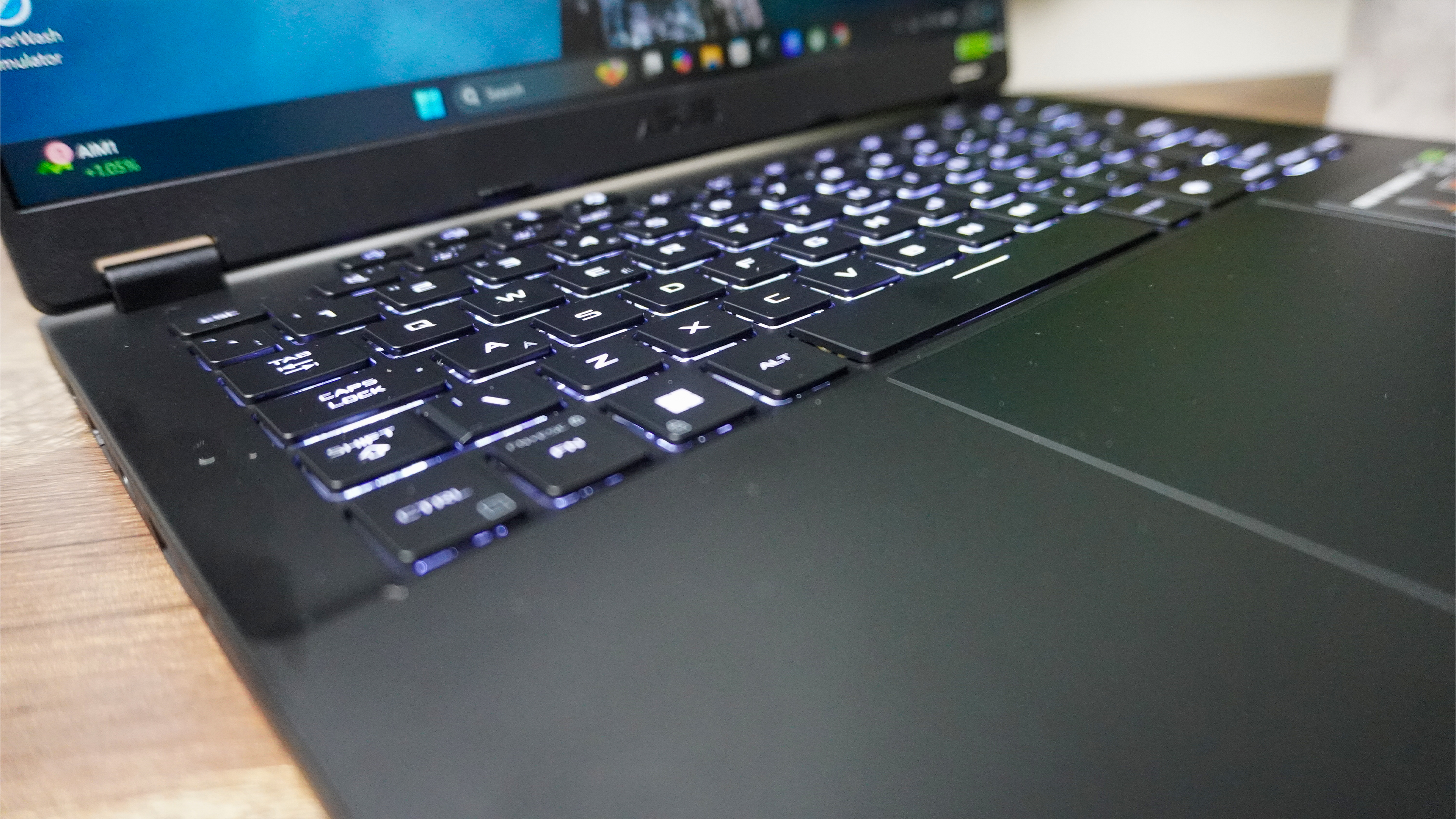
And let’s not forget that 3.2-pound weight. For a gaming laptop, this is impressively light and the military standard testing gives me full confidence of throwing this in my backpack to take on the road.
A mid-range gaming tour de force
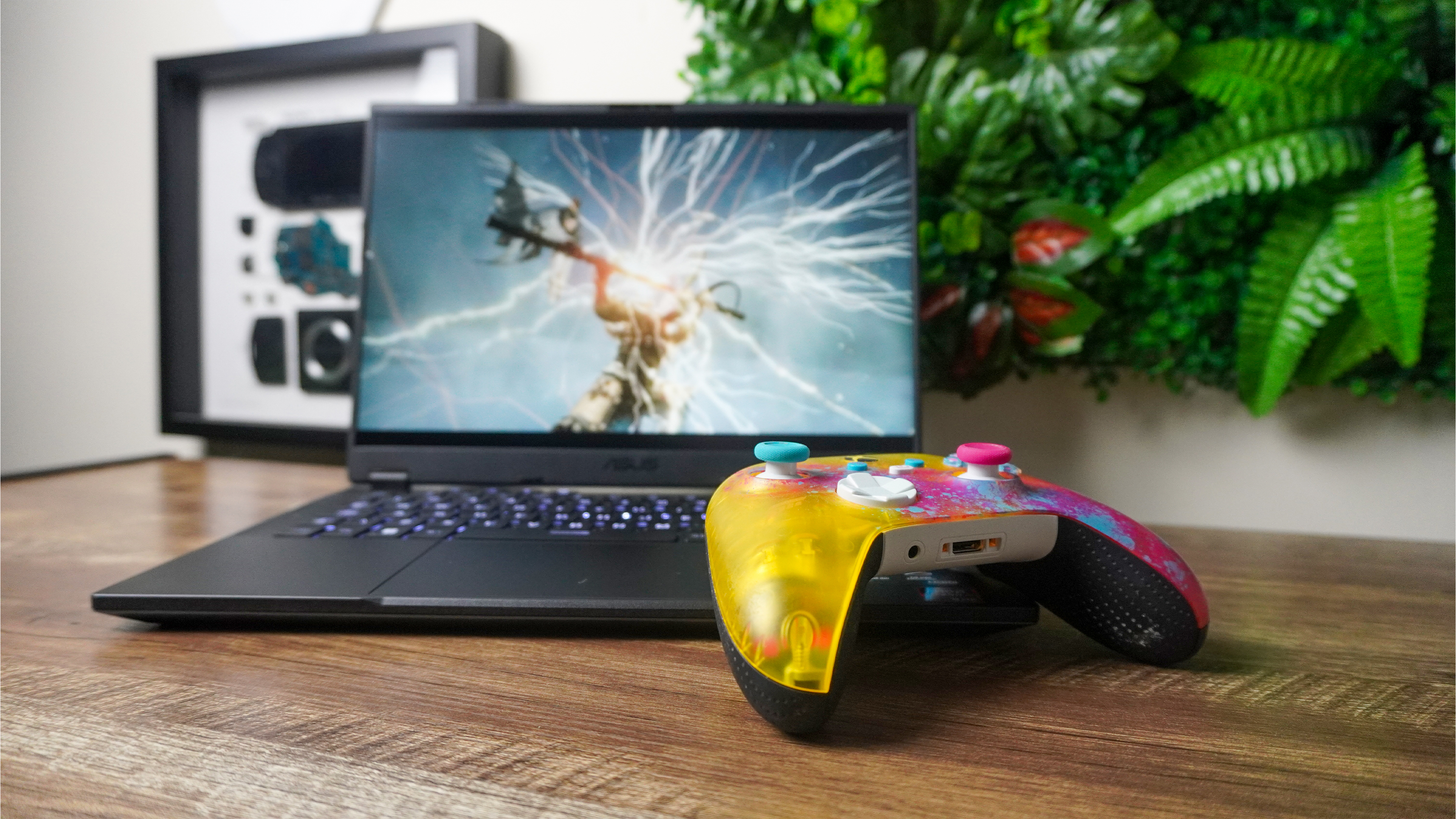
I’m not gonna lie. I expected Asus to slap last gen specs in this laptop and call it a day. I mean this is the TUF lineage — they don’t want to make ROG Zephyrus entirely redundant…right?
Well, someone in their Taipei office must have lost their marbles as it actually has more CPU power than the current ROG Zephyrus G14, thanks to the use of an AMD Ryzen AI 9 HX 370 chipset.
In use for productivity, this chip is a serious screamer. That NPU is seriously beefy for keeping the AI tasks you find in a lot of apps nowadays (like Photoshop) nice and zippy while paying extra close attention to the battery life (more on that later).
But let’s get into what you wanted to hear about. In terms of gaming, this system is admirable. Without the horsepower of the RTX 4070 you’d find in the ROG Zephyrus G14, frame rates don’t match those highs, but it comes damn close given the slightly higher wattage being pumped through the RTX 4060 of the TUF Gaming A14.
What all of this means is that you get something here that you won’t really find anywhere else in the smaller gaming laptop space — balance. One of the real super strengths of a gaming laptop is not just being able to play games on the go, but also in being able to be a place where you can get things done by day and play by night.
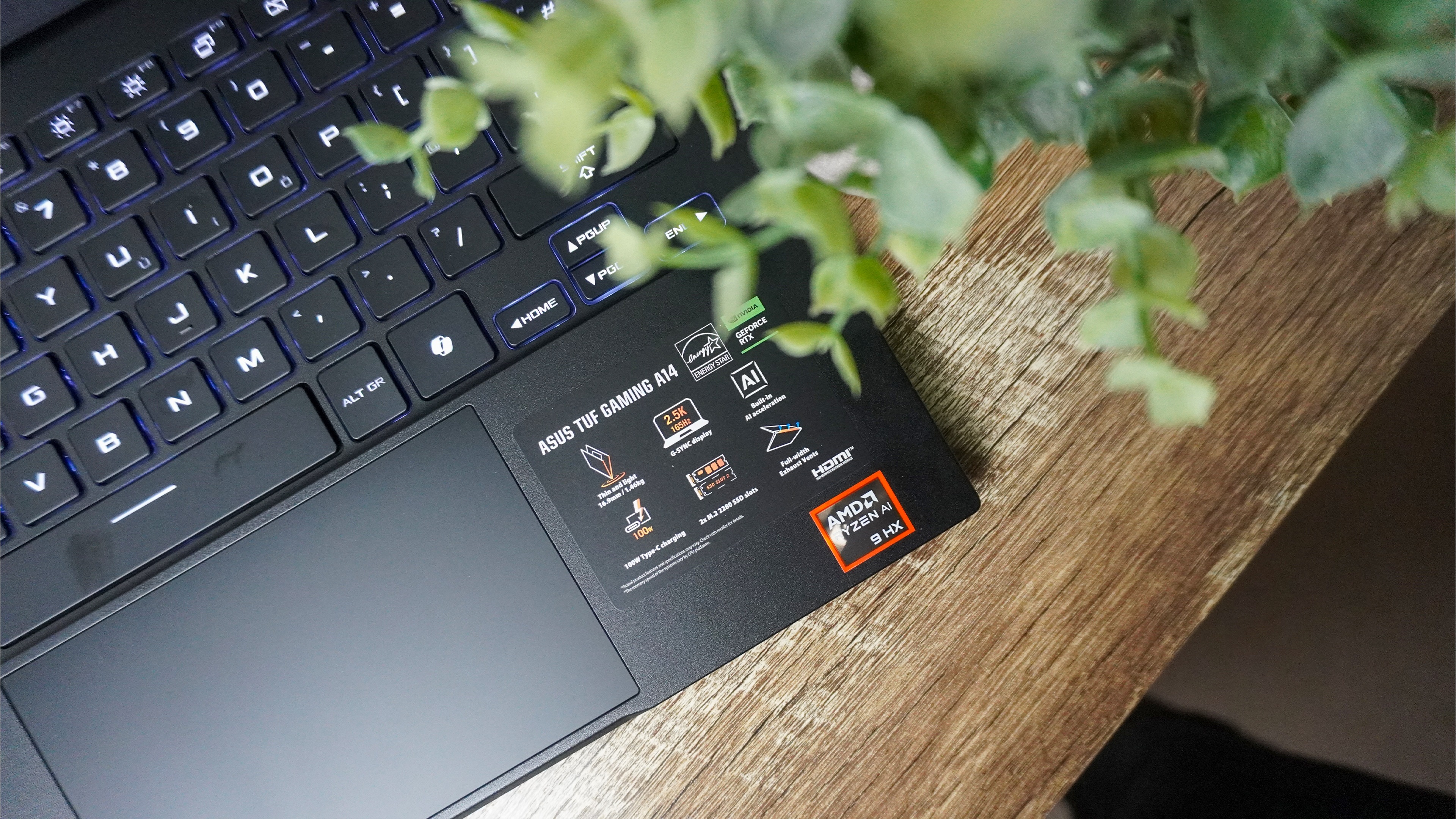
And to strike this perfect balance here in a nicely affordable gaming laptop means this system won’t let you down. Plus, let’s not forget about the access to DLSS 3.5 with the Nvidia card — boosting that Cyberpunk 2077 frame rate at 1080p to 70+ FPS.
Buttery smooth visuals

So one of the big compromises (on paper) is the shift from the OLED found in the ROG Zephyrus G14. But while you do lose that vivid color and crisp contrast, the loss isn’t actually as massive as you may think. What you lose in color, you get back in smoothness and brightness.
In use, that higher brightness makes it easier to see in more well lit rooms and next to windows, and that 165Hz refresh rate over the Zephyrus G14’s 120Hz is important if you’re getting competitive in multiplayer gaming.
Battery life is…wow

So this bit, I wasn’t expecting. Battery life on a gaming laptop has become a bit of a running joke, but the TUF Gaming A14 is a huge step forward in the right direction — thanks to the lower power demands of that AMD Ryzen chip.
Of course, if you throw AAA gaming at it, you’ll see that longevity drop to below two hours, so make sure you’re near a plug. But for the day-to-day, you can confidently go all day away from the charger with your usual productivity needs.
Asus TUF Gaming A14: The downs
While most of the tactical cutbacks don’t compromise the experience, there are two potential bugbears that may frustrate you.
Just 16GB RAM
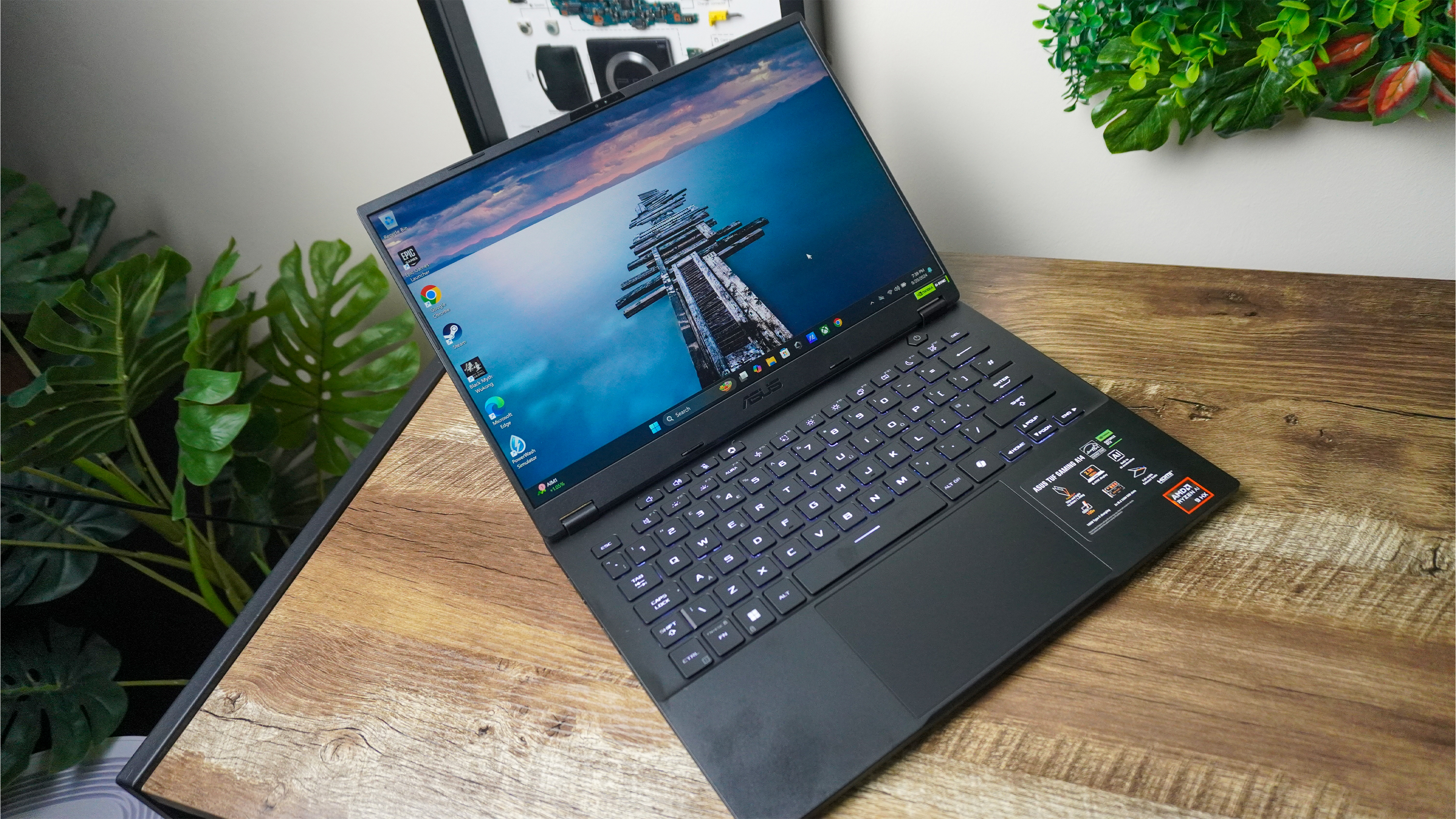
For general productivity, a bunch of games and even some prosumer work, 16GB of DDR5 RAM is enough. But in the more intense moments of multitasking or the bigger AAA productions, things may slow down.
With no choice to upgrade to 32GB, it could be frustrating for those who really put their laptop through their paces.
Can we stop using MicroSD card readers on laptops?

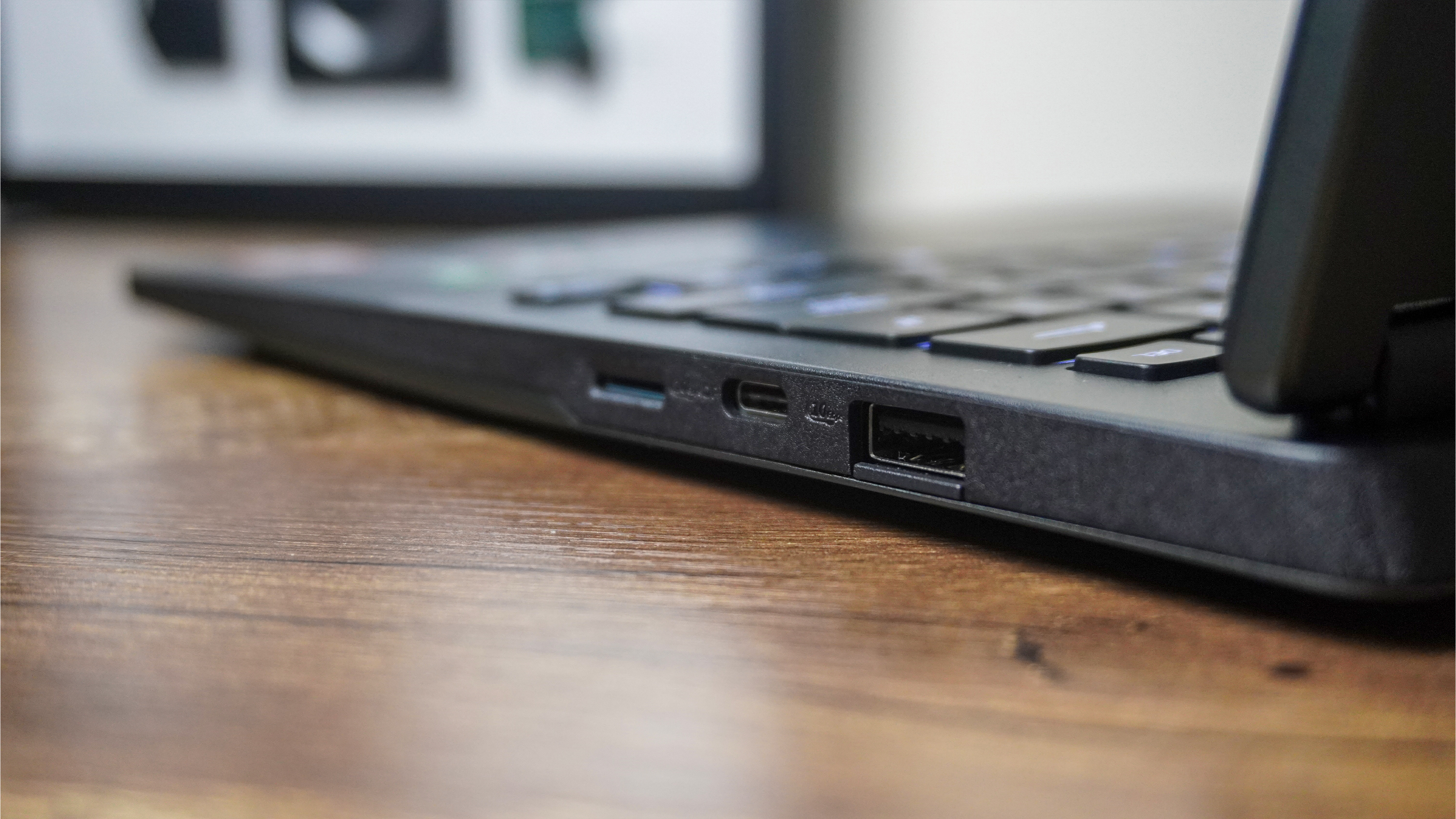
First, it’s good to see USB-4 on here alongside a couple of USB-A sockets for peripherals and display connection. But if you’re serious about gaming, the lack of an ethernet port may sting a little.
And second, it’s 2024. Why are we still skimping on a full-size SD card slot? MicroSD cards are a rarity nowadays, outside of expanding the storage of your gaming handheld. Cameras stick religiously to a full card, so to make this properly useful, we need to pivot.
Asus TUF Gaming A14: Outlook
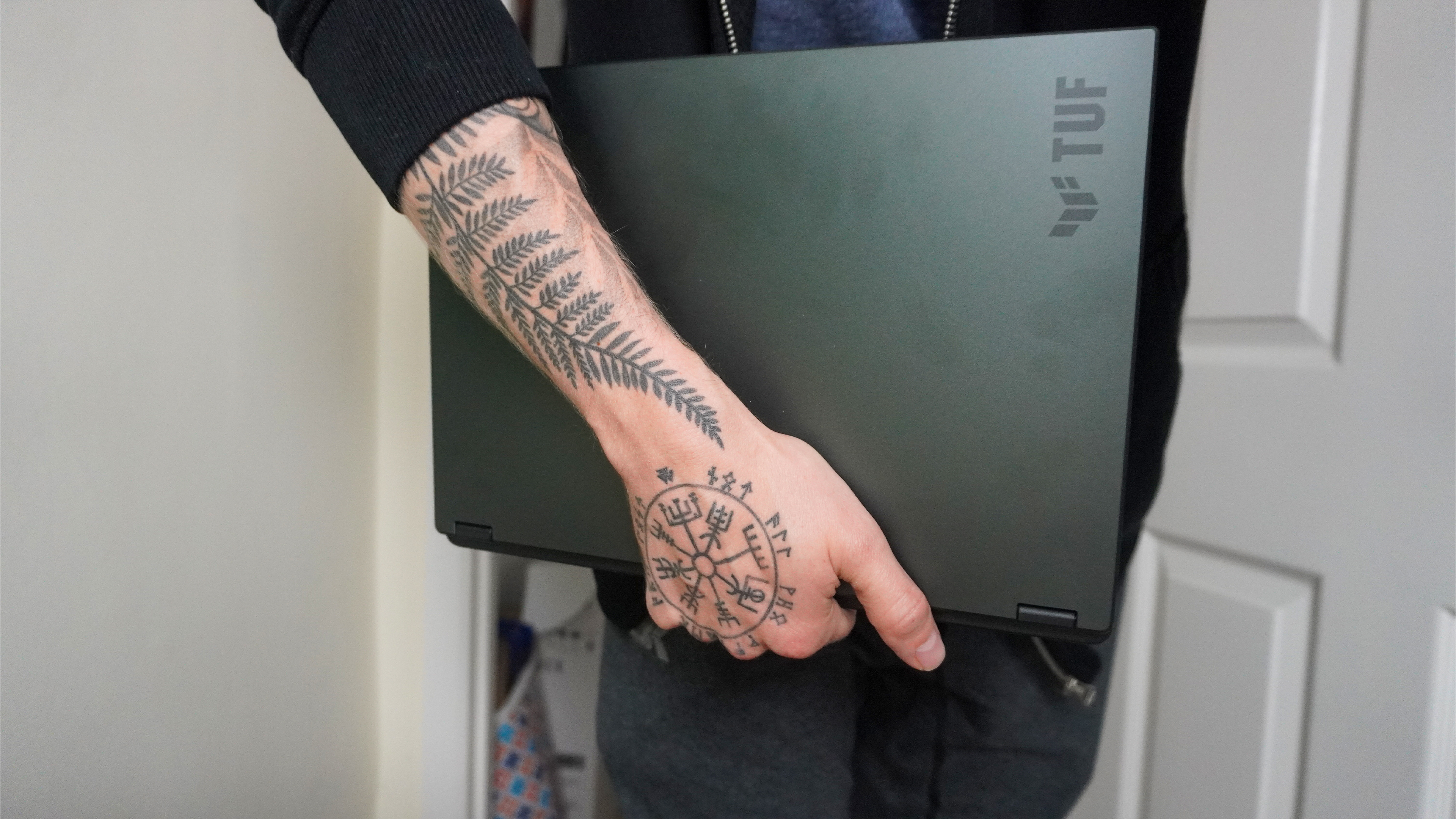
But gripes aside, I’ll just say it. In June, I said this could be my next laptop. Today, I can very much confirm this. The Asus TUF Gaming A14 is a pure combo breaker of power and value for the money — all stuffed into a sleek chassis that is super portable and premium at the same time.
Yes, there are indeed more powerful 14-inch options out there, but for the right balance with the best value for money, this is the one to buy. It is the ROG Zephyrus G14 in spirit, and it has overtaken it as the best gaming laptop in my opinion.







